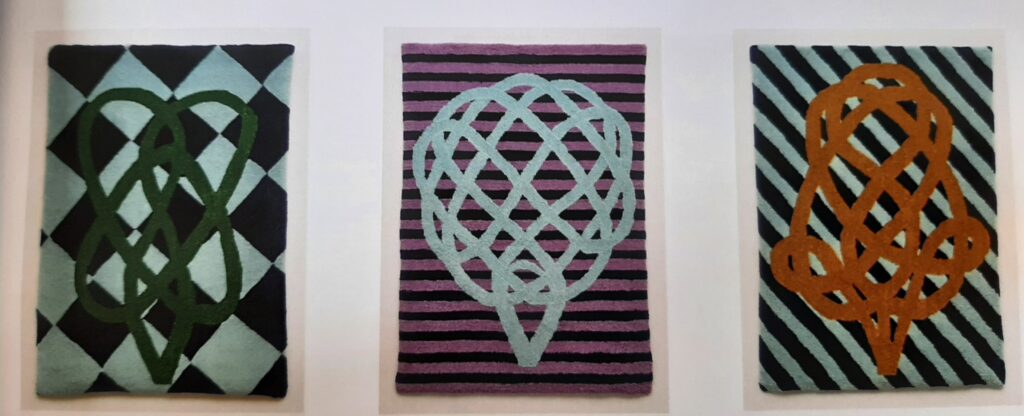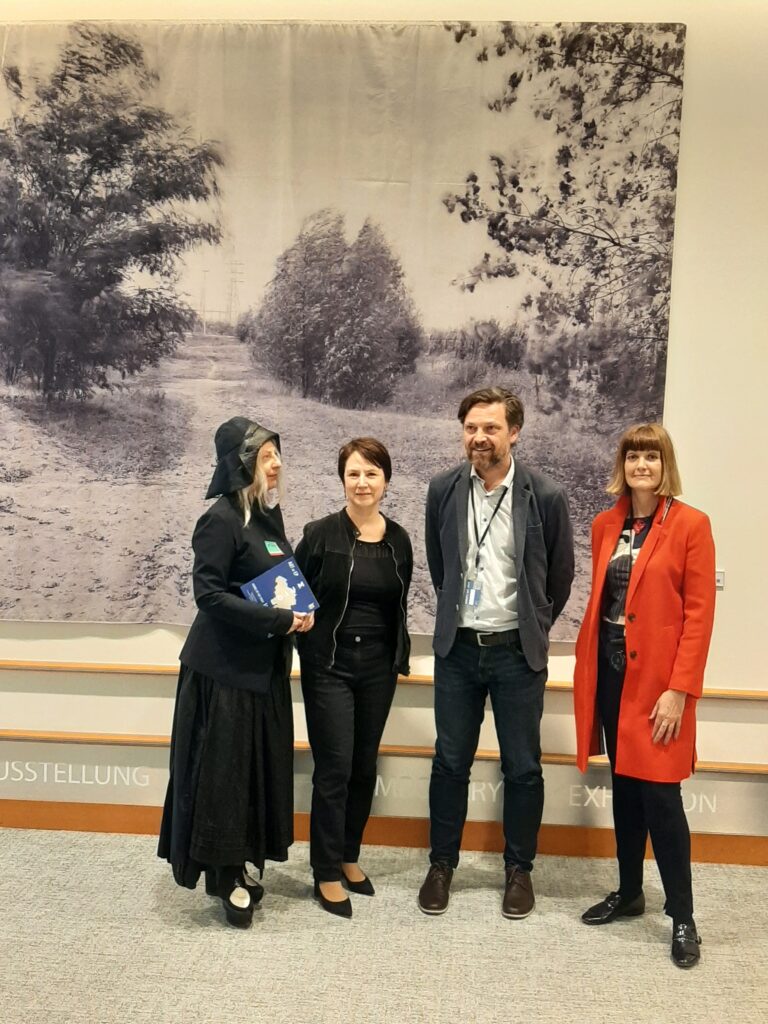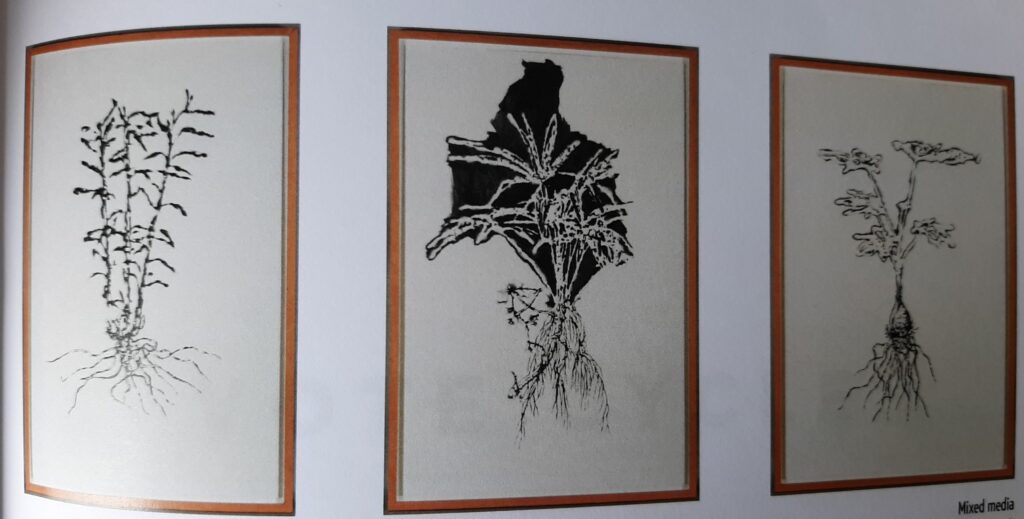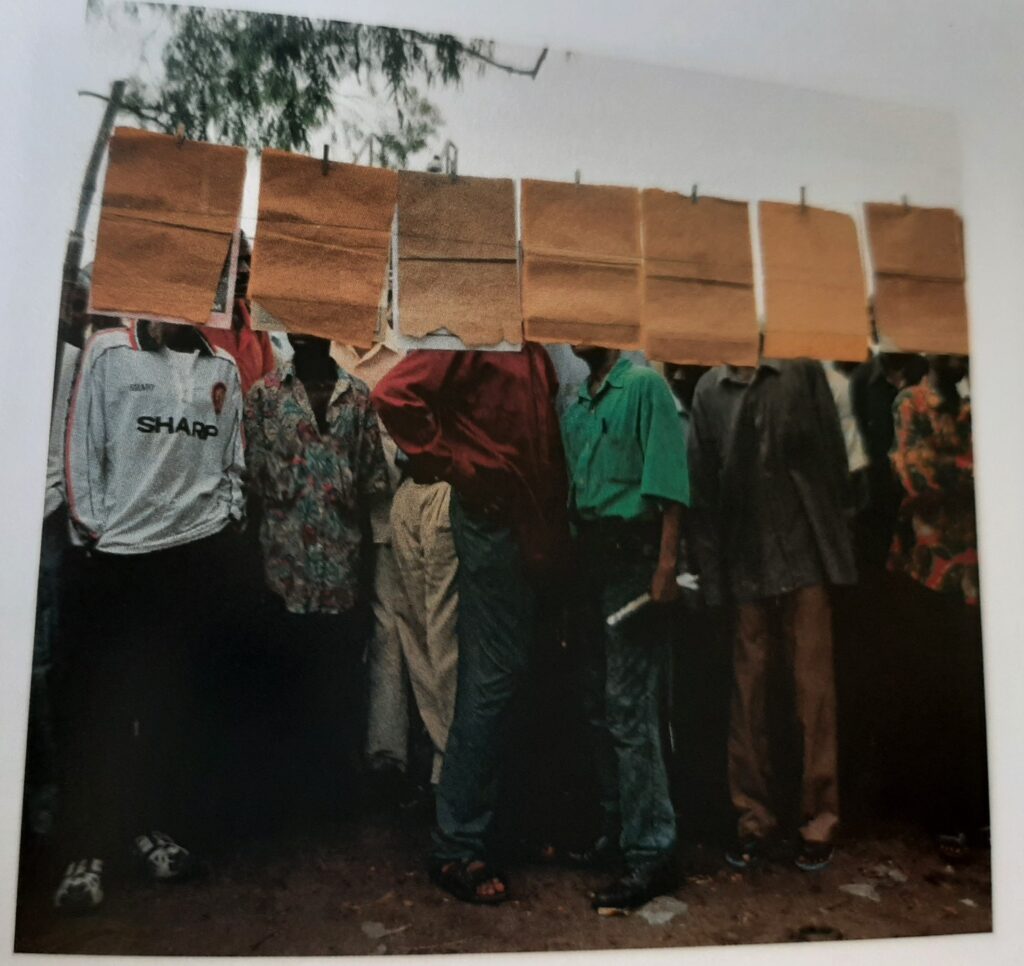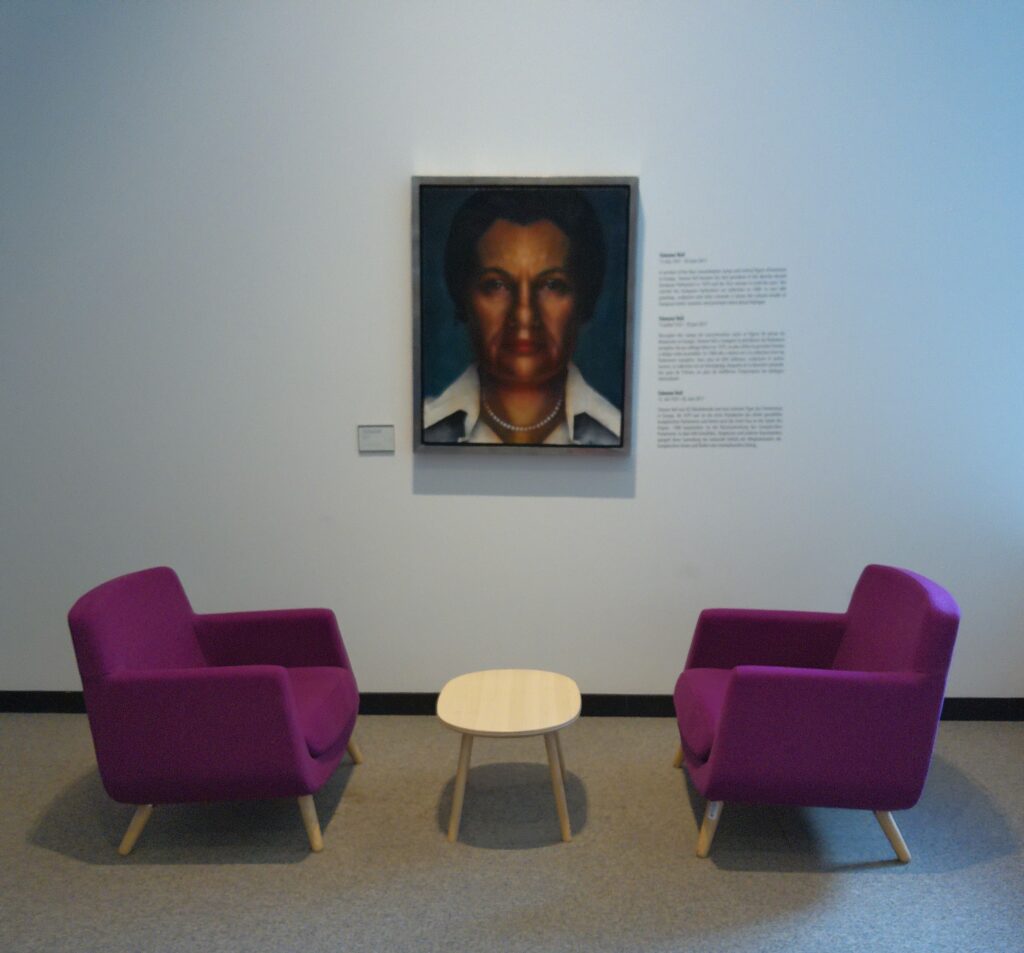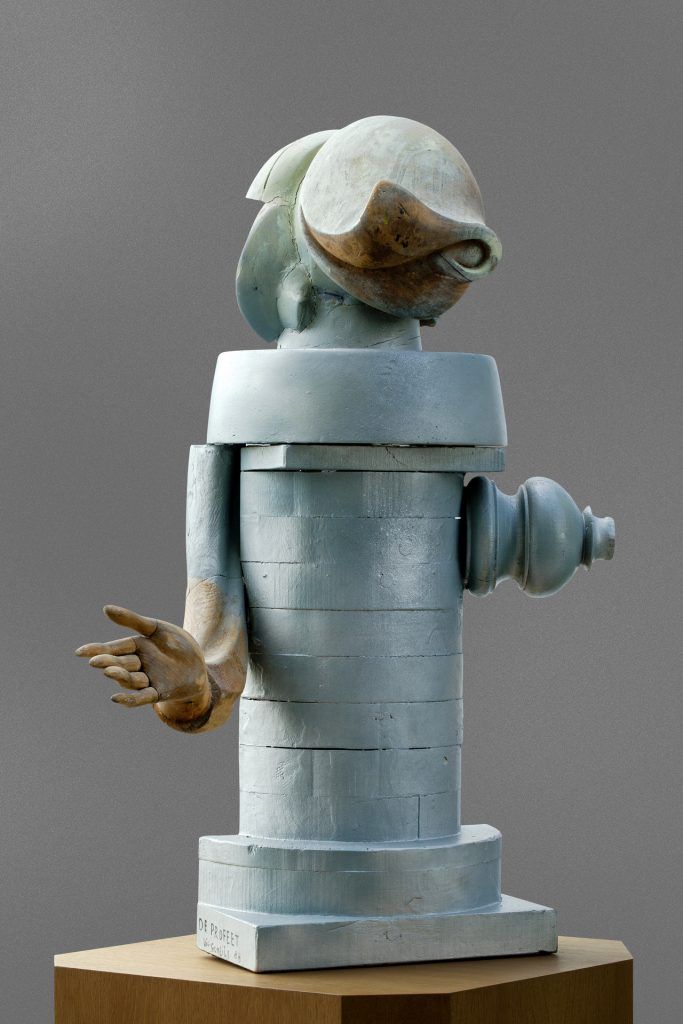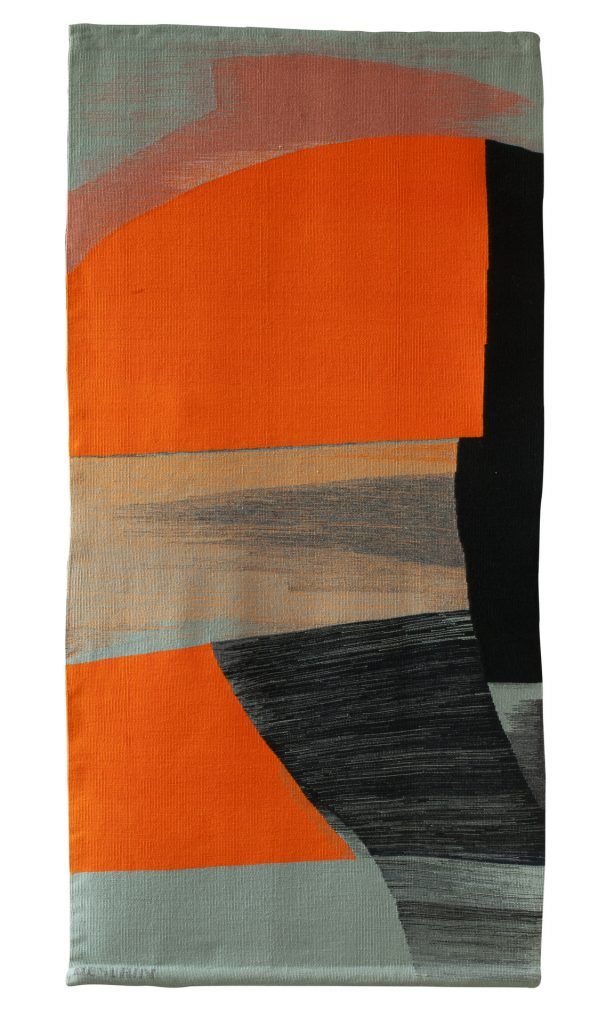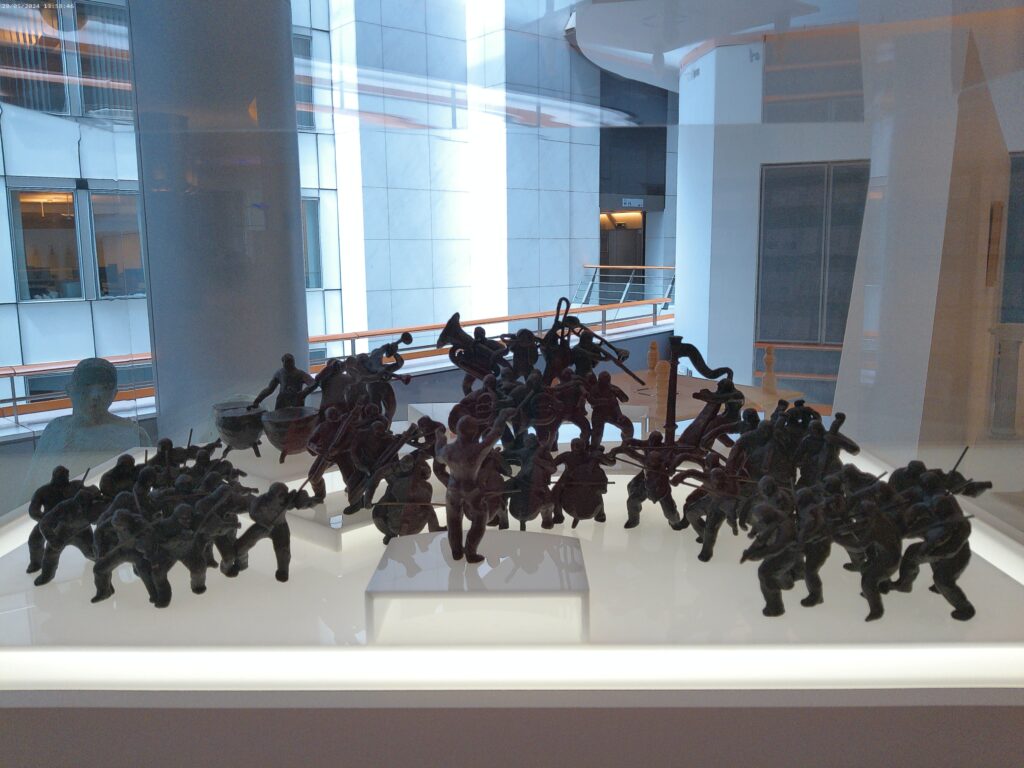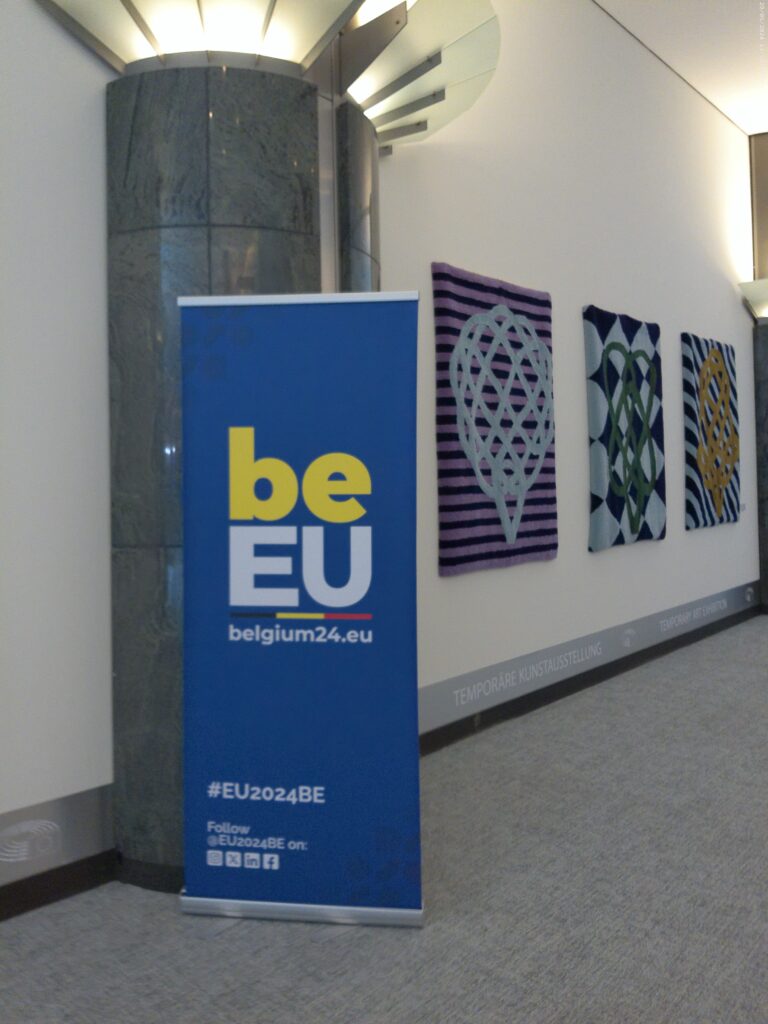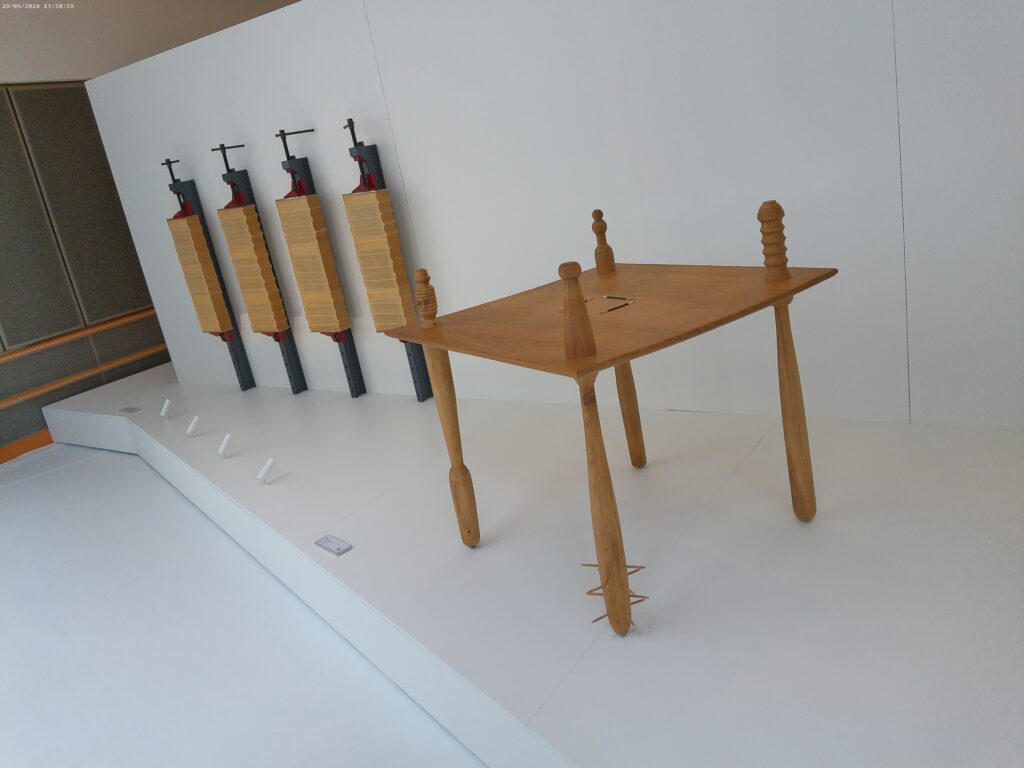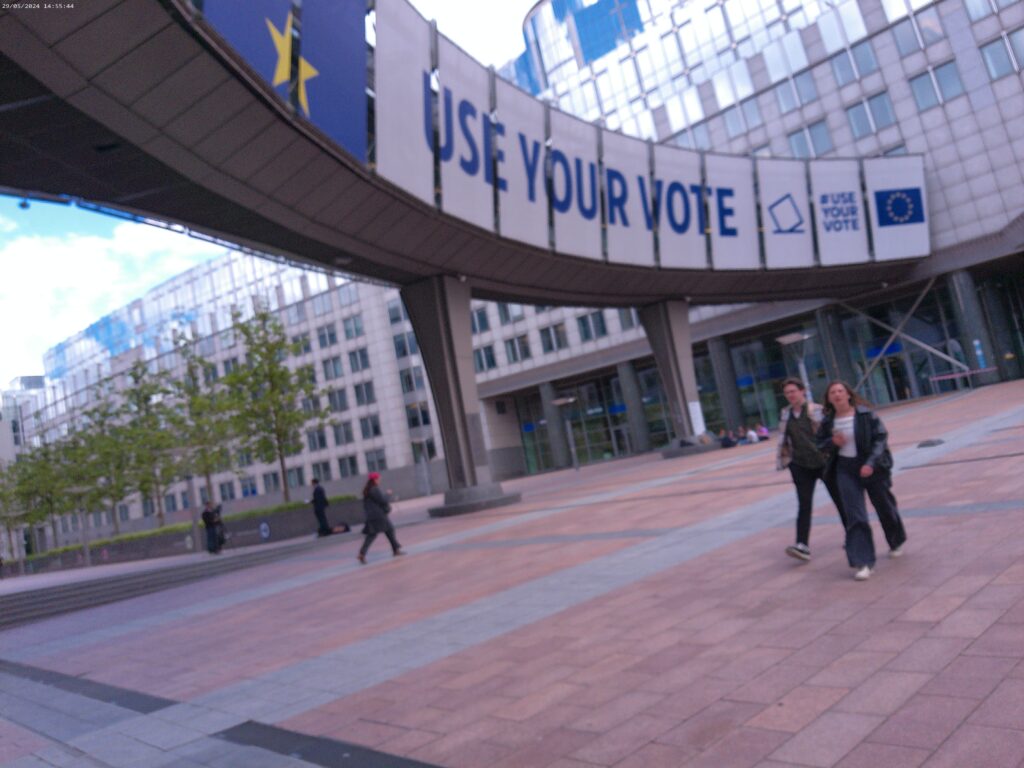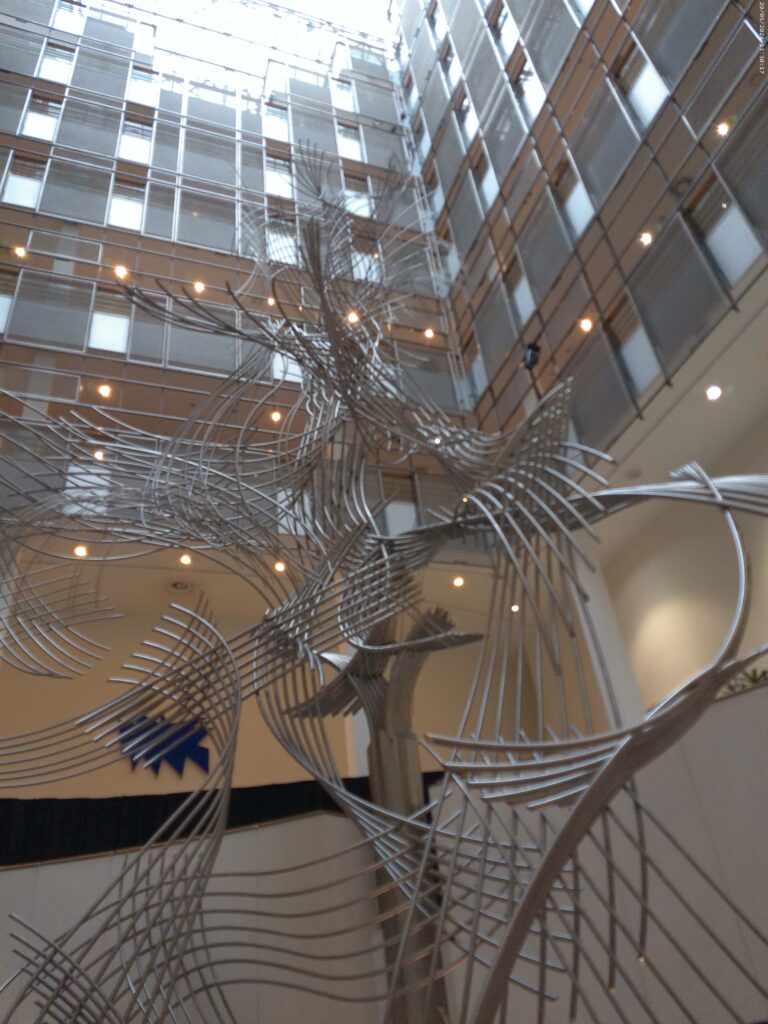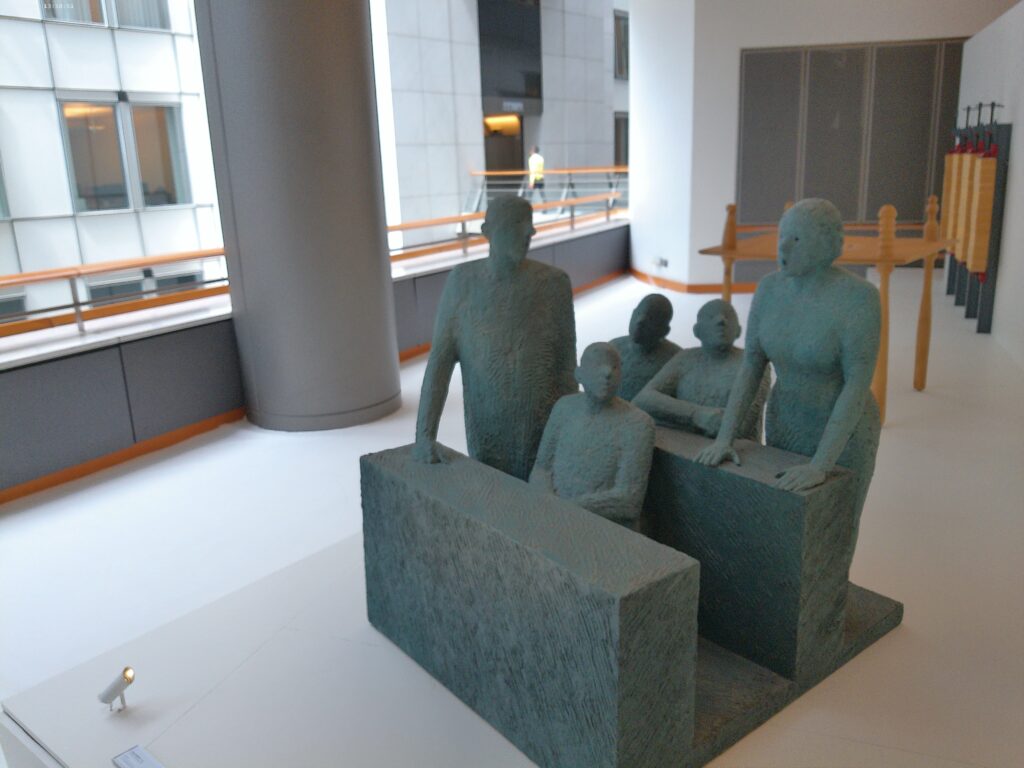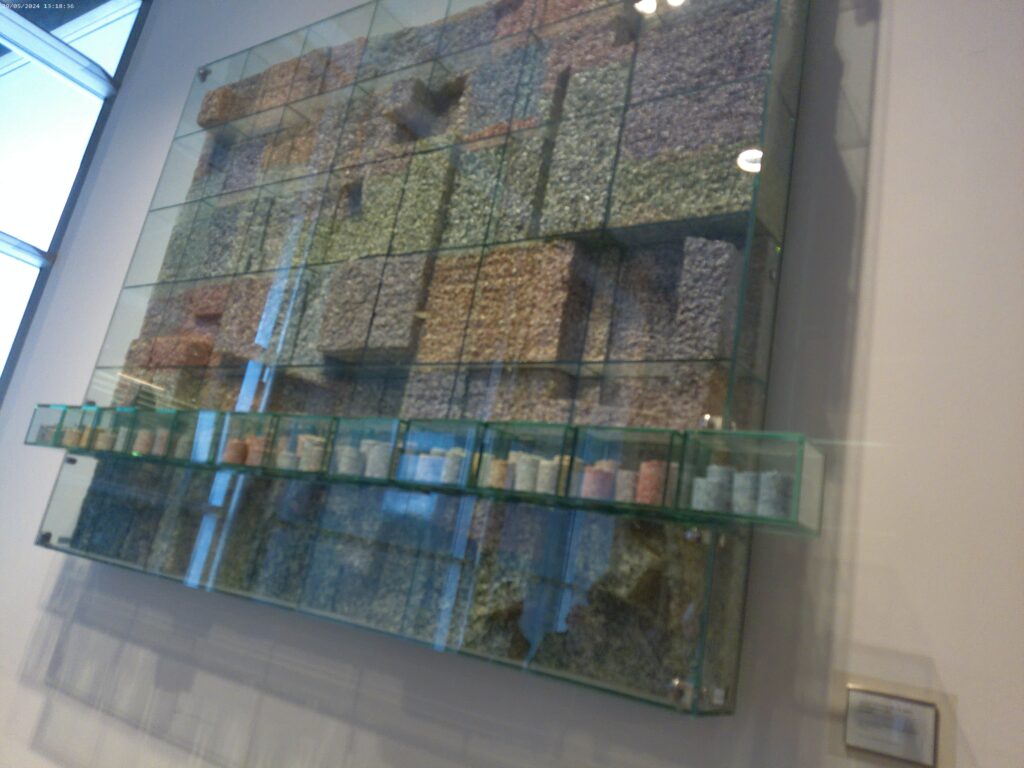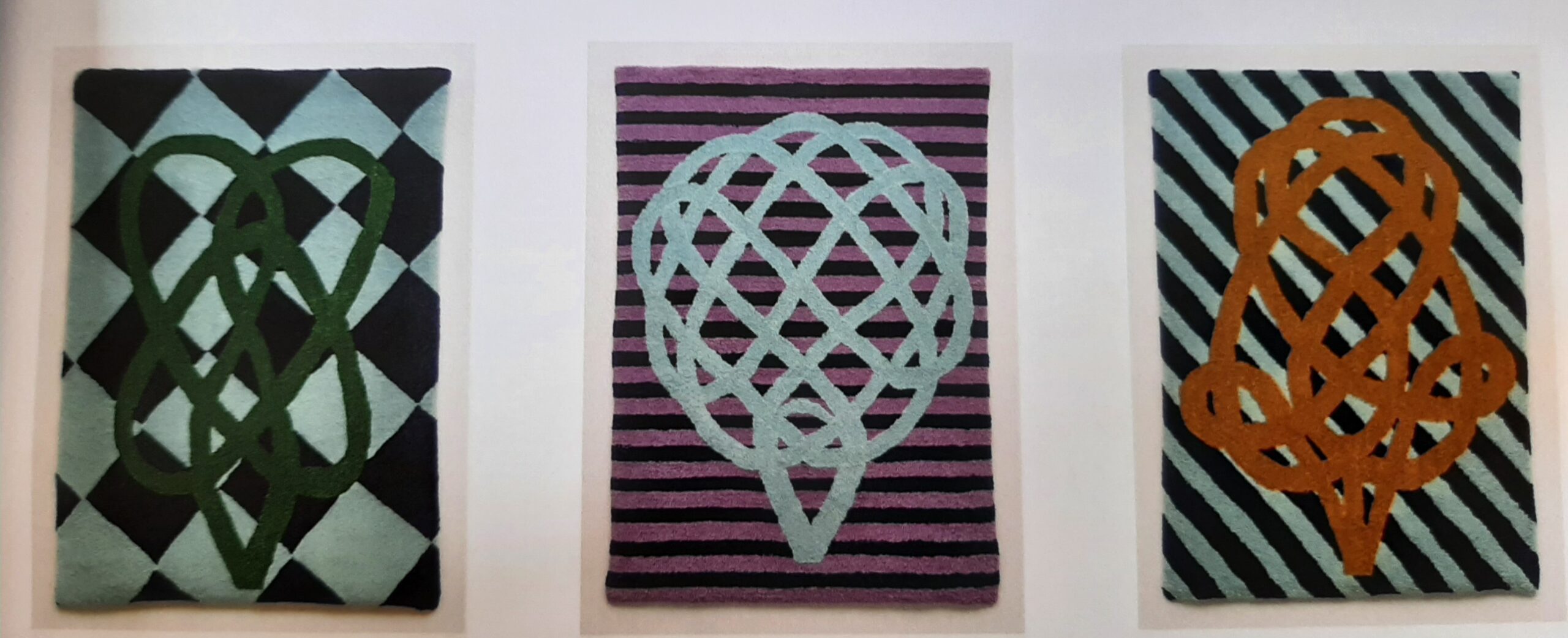Like many banks, large firms and institutions, the European Parliament has an Art Collection. There are currently 600 pieces. The architect Michel Bouygues (Art & Build) designed the legislative body of the European Union in 1993, ideal for art hanging. The most monumental work by the famous Belgian sculptor Olivier Strebelle, the 34 metre high ‘Confluence’, is built into the stairwell atrium of the Altiero Spinelli building. It symbolises the unity and interpenetration of EU cultures and spirals into the sky. If you look up, contrary to the critical film “Don’t Look Up” (especially against politicians), you will see marvellous clouds floating across the sky through the spiral of the sculpture.
In 2019, an audit revealed that 80 per cent of the artists in the collection were male and since then the European Parliament has only acquired art created by female hands to achieve gender balance. 120 thousand euros a year are allocated to the collection. The collection consists of artefacts from EU countries, but there are also inclusions of non-EC countries, such as a tribal canvas from Australia. The top officials of the European Parliament themselves choose from the collection for their offices – it is curious what Roberta Mezola looks at every day.
This year, on the occasion of the Belgian Presidency of the European Council, the European Parliament opened the “Voices” exhibition with a hint of the Election Year both in the EP and in Belgium itself. Curators from 6 Belgian parliaments selected the works of Belgian artists through a democratic procedure. In my opinion, the selection is very good and reveals the theme. The voices of the artists sound convincing. How the voters will dispose of theirs is a rhetorical question.
My two favourites:
Kato SIX (1986) created Carpet Beater Carpets for the Flemish Parliament in 2021. Three handmade carpets depict carpet beater carpets. Today carpets are dry-cleaned, but in my childhood, the clatter of the beater carpets rang through the yards, symbolising the changing seasons of the year. The first snow would drive the heads of households (usually men’s work) out into the fresh air to beat the dust and wash the carpet. The Belgian artist’s metaphor reminds parliamentarians that it is also useful to beat the dust of bad decisions out of politics. The carpet beater is a tool to bring order to the house. Parliament also needs order and law.
Benoît Platéus (1972) created the triptych ‘André, Aurélie & Laurence’ in 2004. A botanist will immediately realise that the tops in the 3 images of plants do not correspond to their stubs. How immigrants, torn from their roots, try to put down roots in other countries. People of different ethnicities, cultures, historical backgrounds. Someone takes root, all without exception painfully, someone can’t find himself in a new place at all. A very strong metaphor! It echoes the theme of Art Biennale 2024 in Venice ‘Foregners Everywhere’.
